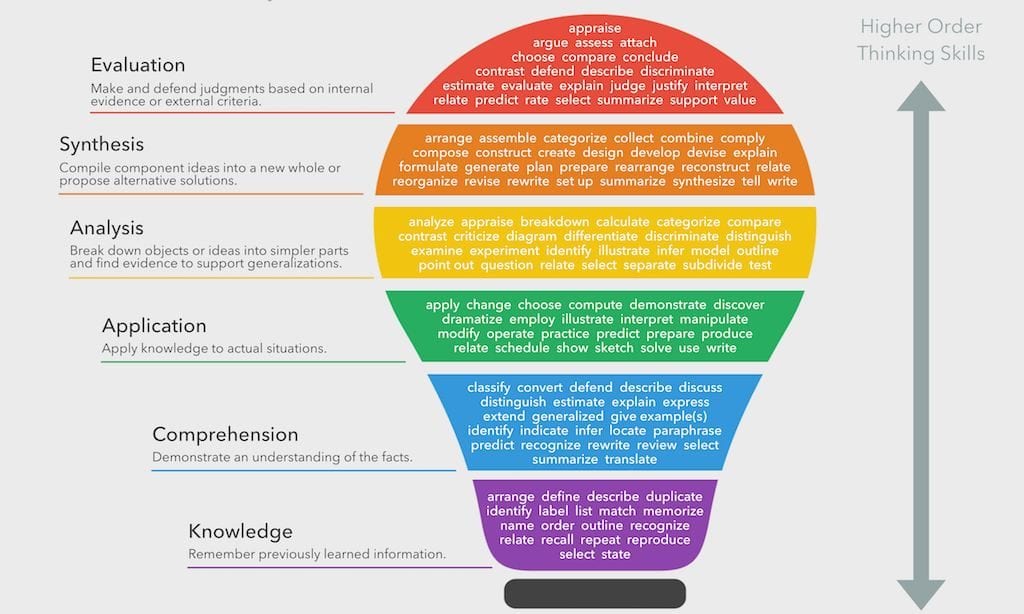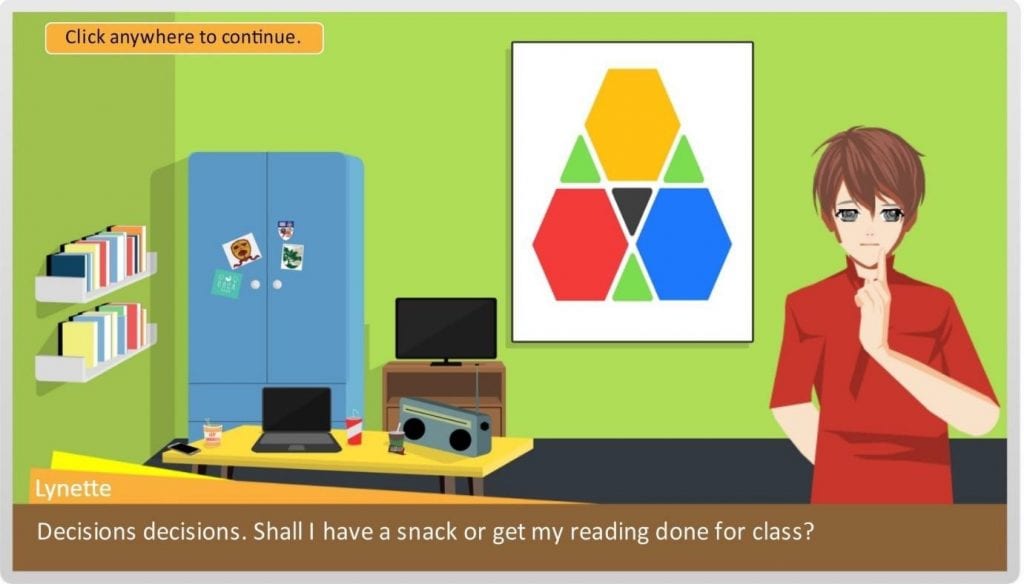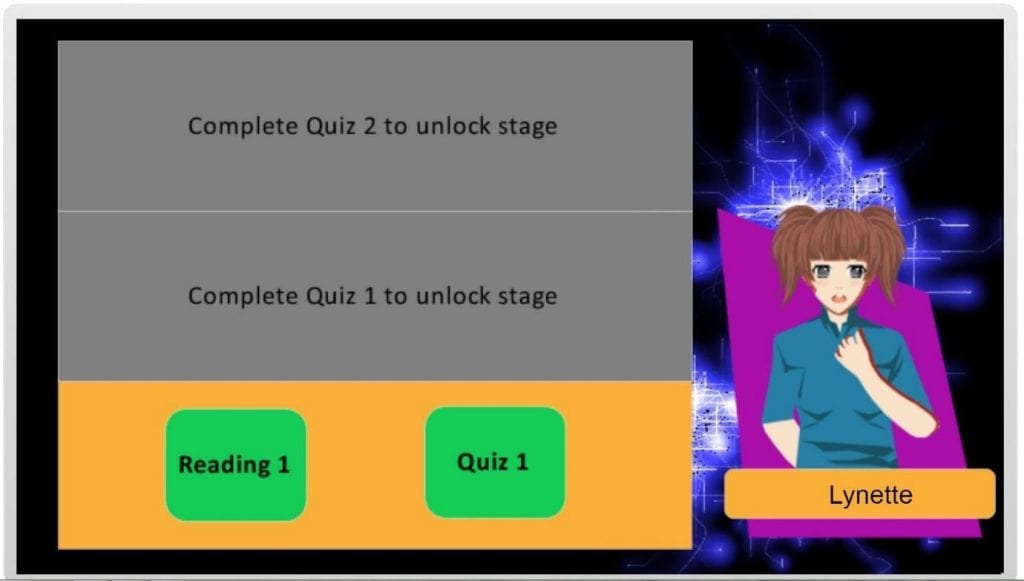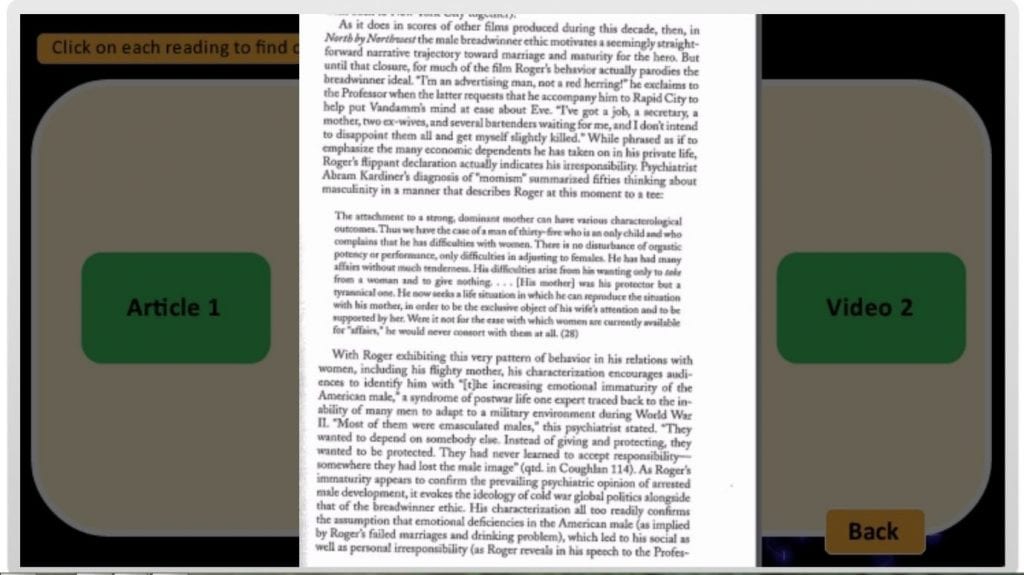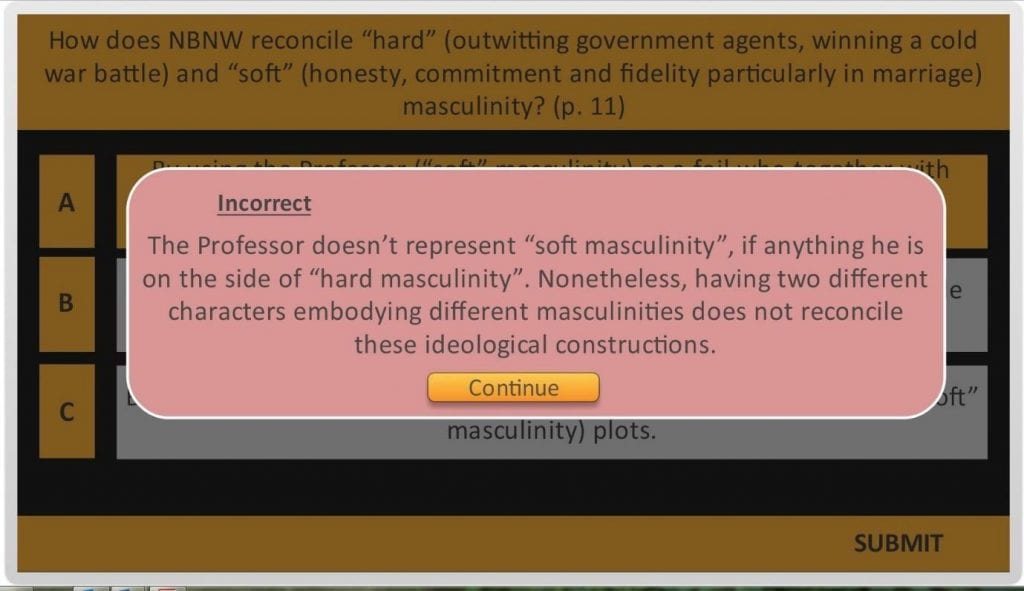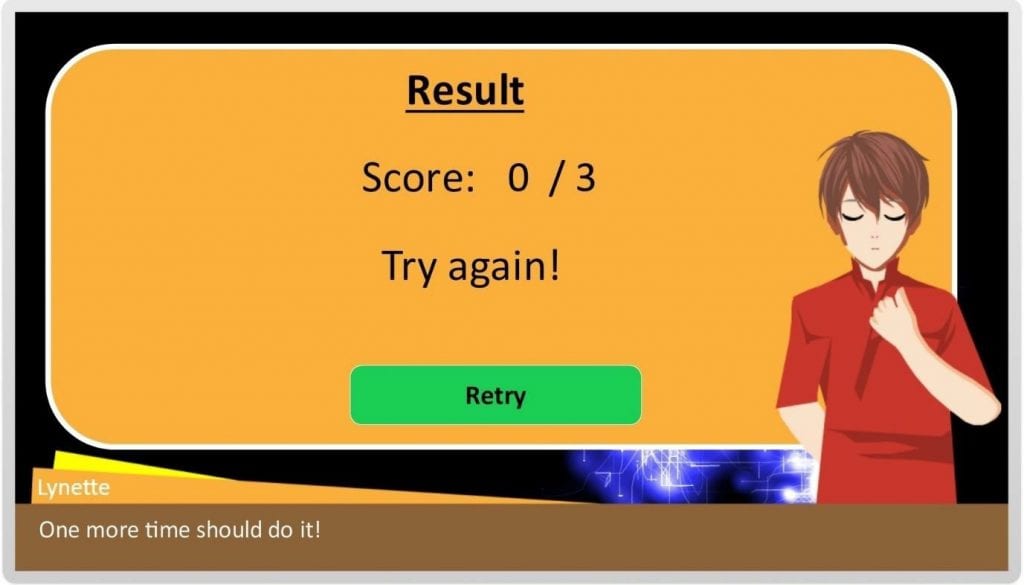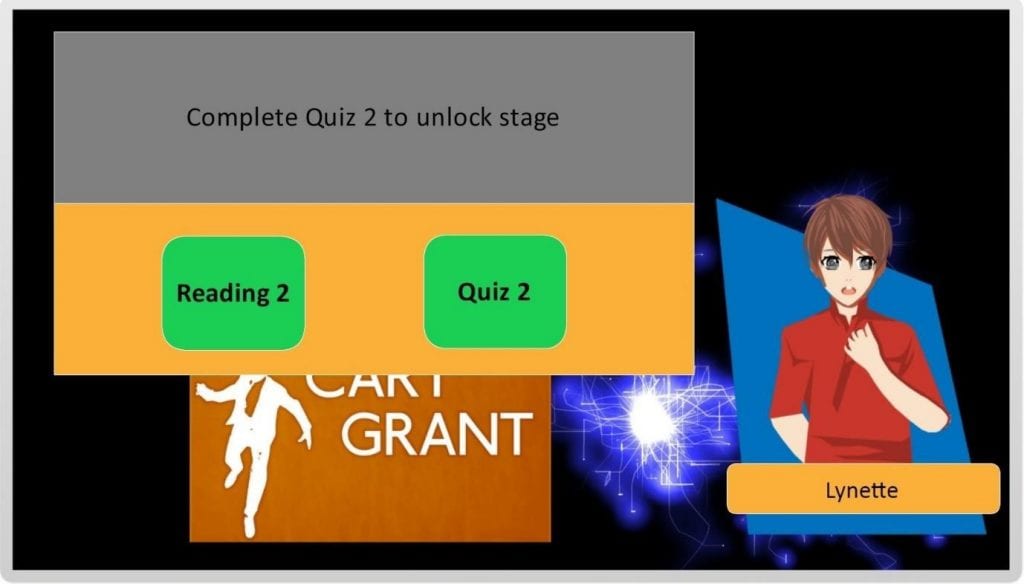Meaningful Gamification as a Scaffolding Strategy
by Lynette Tan Yuen Ling
Context
I teach on the IEM (Ideas and Exposition) modules of CELC (Centre for English Language Communication) to students from the residential colleges at Utown NUS. One of the pedagogical strategies that I employ is that of blended learning, where reading material is scaffolded for students such that key concepts are understood outside of class before applying them during seminars. In Bloom’s Taxonomy the higher level skills of application and analysis are seen to be of more value than knowledge and comprehension, though it rests on the latter two as a foundation.
(source: https://www.teachthought.com/learning/what-is-blooms-taxonomy-a-definition-for-teachers/)
Recently, a body of research is pointing to the importance of “prior knowledge” for learning, alongside a key best / essential practice: that of “retrieval” or “testing” (see Chan & McDermott, 2007; Roediger & Butler, 2011; Blankenstein et al., 2012). In fact, as early as 1998, Walvoord and Anderson promoted testing students on new concepts prior to the classroom in order to initiate the learning process. Motivating students to acquire knowledge of new material independently and effectively, either through online databases or physical journal articles or books, as well as testing them in a stress-free environment, is a challenge. There is also evidence that testing is one of the main causes of anxiety in and outside of the classroom (Zeidner & Springer-Verlag, 1998; Sterian & Mocanu, 2013). The students’ ability to interpret this new knowledge from such sources is an additional obstacle to their early involvement in the learning process. A recent study that tracks the process of preparation outside class suggests that while students may access the material, there is a lack of data on the actual time spent on it as well as their understanding of the content (Francis, C.A. in Keengwe et al, 2014, 278). The impact of overcoming the challenge of pre-reading is significant: retrieval or repeated testing has been found to produce a large positive effect on learning (Karpicke & Roediger, 2008).
The challenge that I faced in teaching IEM2 was where students’ ability to think critically and contribute to seminars depended largely on their engagement with the core reading materials of the modules prior to class. While during seminars students are tasked to apply and analyse either rhetorical or theoretical concepts found in the reading material, there is often a mismatch between the prior comprehension that students have of the readings and the understanding that is needed for effective discussion of the material. Each module in the IEM classroom typically has 10 or more core readings, and a much larger supplementary list. Having students prepare for seminars beforehand via pre-reading and retrieval would enhance their learning experience within the classroom in affording them a level of competence that the educator can build upon and develop further through analysis or other strategies that promote critical thinking. In effect, students will more easily achieve the higher level learning outcomes resulting from critical thinking, “analyse, evaluate and create” as categorized in Bloom’s taxonomy. On the other hand should students not be able to comprehend the material in the first instance, then their experience in the classroom is very negatively impacted – unable to grasp the key concepts, they are often confused and even bewildered, not only unable to apply these concepts to new contexts but having their confidence and motivation greatly eroded. This ties in with Deci and Ryan’s key component needed for intrinsic motivation to take place – that of the sense of competency.
To that end I initiated a project on gamifying reading material that began in 2014 and continues in its more recent versions today. The quantitative data of this gamification project that I collected in its earlier manifestations provided data for the time that students take to engage with the pre-reading material, and tested their comprehension of the readings, all in a stress-free and motivating environment. The qualitative data collected highlighted not only the positive feedback from students regarding the project but also difficulties with the gamification they experiences and improvements that they would like to see.
Gamification and ‘Meaningful Gamification’
The latest update of empirical evidence of the impacts and outcomes of gamification (Boyle et al., 2016) found 512 papers between 2009 and 2014 reporting empirical evidence of the positive outcomes of playing games, focusing on 143 papers with higher quality evidence concluding that knowledge acquisition, promotion of engagement and learning support were the most frequently recurring impacts of gamification. This was a four to five fold improvement from the previous literature review (2004 to 2009) which only identified 129 papers reporting positive outcomes. While this is an overwhelming indication of the positive impacts of gamification, there is also intense criticism, the most vocal identified by Seaborn and Fels as being that of games scholar Ian Bogost, who claims that gamification is “exploitationware”, a perversion of the game medium by marketers and big business for easy profit, and that it “proposes to replace real incentives with fictional ones” (Bogost, 2011, quoted in Seaborn and Fels, 2015). However Seaborn and Fels assert that Bogost’s criticisms relate only to games that feature extrinsic rewards (such as medals and badges), while the approach of this project is that of “meaningful gamification”, which is the antonym of “reward-based gamification” so disparaged by Bogost.
Nicholson coined the term “meaningful gamification” where users are able to find “meaningful connections with the underlying non-game activities” and rewards are only used when “truly necessary”. The term “meaningful gamification” is thus derived from the connection between the user’s own interests and background and the desired behavior (Nicholson, 2013, p. 671). “Meaningful gamification” avoids the pitfalls of “reward-based gamification” where users typically tire of goals that are only significant within the game itself and have little external relevance. This latter form of gamification is also perceived as controlling and manipulative, leading to resentment and a decrease in autonomy. Meaningful gamification, on the other hand, has a user-centred approach which in turn expedites the three needs of successful learners in line with Self-Determination Theory as identified by Ryan and Deci (2000) – autonomy, competency, and relatedness. When fulfilled, these needs cultivate intrinsic motivation. “Meaningful gamification” works well as a catalyst in motivating students to read background material and grasp key concepts in a supportive environment that is free from anxiety. The strategy of gamification that I employ is one that is aligned to this form of gamification.
Intervention strategy: Gamification
To that end I designed a game together with Playware Studios in order to: (1) improve student comprehension of new material (2) provide a platform to test students on the material in a stress- free environment (3) increase motivation to engage with new material outside of the classroom which will facilitate a flipped classroom (4) create a learning enhancement product that will have broad programmatic application to all other IEM modules and in academic disciplines beyond,
particularly those that require pre-reading of new material prior to classroom activities. The first 2 (student comprehension and a stress free environment) of these aims have been met to an extent in the first phase of the gamification intervention conducted, showing evidence for the potential of gamification in this context; however, there were limitations of that study (due mainly to financial constraints) indicating that further research is needed. These arose mostly due to (1) technical limitations of the product (lack of sound, absence of multiple avatars and difficulties in downloading the game, as well as quality of the graphics and movement of the avatar) (2) narrative dissonance – or the application of “work” content to “play” context (3) the lack of complete “relatedness” arising from the absence of a multi-player platform (“relatedness” is a key component of intrinsic motivation as identified by Ryan and Deci). In its second manifestation with NUS CIT the game streamlined the narrative to decrease dissonance and increase relatedness – mirroring the act of reading with the life of a student at NUS, facing the task of preparing for class. Feedback was collected where students were largely concerned with the time it took to complete the tasks in the new game, and a third version was created again with NUS CIT to take student feedback into account. Both qualitative and quantitative feedback will be acquired for this third version at the end of semester 2 of AY2016/2017. The facility of multiple avatars cannot, as yet, be included in the strategy due to financial and technical constraints.
The approach of gamification is preferred over other pedagogical strategies I have employed in the past (Facebook and IVLE quizzes) mainly due to the affordance of instant feedback (according to Nicol and MacFarlane providing good quality instant/timely feedback is one of the ways of delivering quality information to learners, and this in turn promotes one of the 21st century skills that is getting more attention in recent years – self-regulated learning). Gamification also reframes failure as learning and reduces anxiety: a quality I discuss in my paper on the project (Tan, 2018). In addition gamification proceeds without any intervention by the educator (equating with much time saved as compared with Facebook exercises and other online equivalents with a similar impact), as well as the affordance of a dashboard that will show student engagement and comprehension of the material (capturing the length of time taken to play the game as well as the aptitude of the student with relation to the material via a recording of answers to questions about the material within the game). Above all, the approach of gamification is one that I am enthusiastic about due to its ability to cultivate intrinsic motivation through the provision of competence, autonomy (discussed at length in the afore-mentioned paper) and relatability. The link to the current version of the game that I used in semester 2 of AY2016/2017 can be assessed here:
https://courseware.nus.edu.sg/teleport/v1/story_html5.html
The following are some screenshots from this game:
Figure 1: This is the game environment. It is two dimensional with voiceovers provided by NUS students. The student has a choice of two avatars, a male avatar or a female avatar.
Figure 2: Utilizing feedback from earlier versions, students now do not have to complete the additional material before attempting the quiz. This gives them greater autonomy.
Figure 3: Material that will help them with the quiz can come directly from pages of the reading that students have been assigned.
Figure 4: Material can also come in the form of videos that will supplement the reading.
Figure 5: An incorrect answer selected on the quiz will be met with immediate feedback on why it is wrong
Figure 6: A correct answer will also be met with immediate feedback confirming why the answer is right.
Figure 7: The quiz is attempted in 3 levels and all answers need to be correctly selected before the student can proceed. The student can attempt the level immediately upon completing it.
Figure 8: Upon completing the level part of a picture is uncovered which presents an element of discovery motivating the completion of all the quizzes.
The journey in employing the gamification strategy in my classroom is far from finished and is not one without its challenges – I applied for funding for the LIFT grant (Learning Innovation Fund – Technology) twice over 2 years, the result of the first calling for revisions of my proposal, and the second with a final negative outcome. However the writing of the proposals, the feedback I received from the grant committee, as well as the colleagues that I met along the way helped to refine my ideas and gain me an introduction to Playware Studios and CIT, in effect helping me to achieve part of what I envisioned without any financial cost. In addition to the article I published on this gamification project, I have also successfully migrated the game platform across to a law module here at NUS, the results of which were presented at the recent TLHE campus conference (2018). The following are examples of feedback from law students who used my game platform:
Student A: “The Gamification quiz was fun, interactive and engaging. Overall it was a refreshing exercise which allowed me to have fun while helping me retain information which I had gone through in my readings.”
Student B: “The gamified quiz is definitely very unique because it incorporates visual elements intertwined with questions, which makes for a very satisfying experience overall”
Student C: “I found the gamification strategy the most helpful because it utilises a very structured-focused pedagogy in understanding knowledge by focusing the reader on a specific part of the reading. This greatly facilitates understanding as information is absorbed”
Student D: “The game was the most helpful strategy as the questions were divided into three stages and the relevant pages were provided before each set of questions, which made it easier to absorb the information in the readings.”
Student E: “I think that the Gamified quiz may certainly be useful, especially in incentivising students to approach difficult readings…asking these questions in an unintimidating, unpressurising setting is good for helping us to think about the responses without pressure.”
As can be seen from the above, students appreciated not only the “refreshing “ and interactive nature of the game, they also found the platform to encourage the retention of ideas from the readings, as well as structuring their learning in a manner that aided comprehension. In addition to what I have already published, the new feedback from the law students here also shows a meeting of the various aims that I had initially – (1) students report improved comprehension of new material “greatly facilitates understanding, (2) the platform to test students on the material is stress- free “unintimidating, unpressurising [sic] setting” (3) increase motivation to engage with new material outside of the classroom which will facilitate a flipped classroom “incentivizing students” (4) and this successful migration is evidence that I have created a learning enhancement product that will have broad programmatic application in academic disciplines beyond the IEM module, particularly those that require pre-reading of new material prior to classroom activities.
The world our students will graduate into is one that will arguably be even more dominated by technology, and in developing pedagogical strategies I am drawn to harnessing its potential for motivating their learning in the classroom.
References
Benson, J., & El-Zahhar, N. (1994). Further refinement and validation of the revised test anxiety scale. Structural Equation Modeling: A Multidisciplinary Journal, 1(3), 203-221. doi:10.1080/10705519409539975
Boyle, E. A., Hainey, T., Connolly, T. M., Gray, G., Earp, J., Ott, M.. . Pereira, J. (2016). An update to the systematic literature review of empirical evidence of the impacts and outcomes of computer games and serious games. Computers & Education, 94, 178-192. doi:10.1016/j.compedu.2015.11.003
Deci, E. L., & Ryan, R. M. (2008). Self-determination theory: A macrotheory of human motivation, development, and health. Canadian Psychology/Psychologie Canadienne, 49(3), 182-185. doi:10.1037/a0012801
Deslauriers, L., Schelew, E., & Wieman, C. (2011). Improved learning in a large-enrollment physics class. Science, 332(6031), 862-864. doi:10.1126/science.1201783
Karpicke, J. D., & Roediger, H. L. (2008). The critical importance of retrieval for learning. Science, 319(5865), 966-968. doi:10.1126/science.1152408
Keengwe, J., Onchwari, G., & Oigara, J. N. (2014). Promoting Active Learning through the Flipped Classroom Model (pp. 1-355). Hershey, PA: IGI Global. doi:10.4018/978-1-4666-4987-3
Lage, M.J., Platt, G.J. & Treglia, M. (2000) “Inverting the classroom: A gateway to creating an inclusive learning environment,” Journal of Economic Education, vol. 31(1), p. 30-43.
Nicholson, S (2013). Two paths to motivation through game design elements: Reward-based gamification and meaningful gamification. iConference 2013 Proceedings (pp. 671-672). Doi: 10.9776/13313
Nicol, D. J. and Macfarlane-Dick, D. (2006) Formative assessment and self-regulated learning: a model and seven principles of good feedback practice. Studies in Higher Education, 31(2),199-218.
Pintrich, P. R. & Zusho, A. (2002) Student motivation and self-regulated learning in the college classroom. In J. C. Smart & W.G. Tierney (Eds.), Higher Education: Handbook of theory and research (vol. XVII). New York: Agathon Press.
Ryan, R. M., & Deci, E. L. (2017). Self-determination theory: Basic psychological needs in motivation, development, and wellness. New York: Guilford Press.
Ryan, R. M., & Deci, E. L. (2000). Self-determination theory and the facilitation of intrinsic motivation, social development, and well-being. American Psychologist, 55(1), 68-78. doi:10.1037/0003-066X.55.1.68
Sandford, R and Jain, S. (2014). Gamelets: A way of thinking about learning games for classroom environments. Playware document.
Seaborn, K., & Fels, D. I. (2015). Gamification in theory and action: A survey. International Journal of Human-Computer Studies, 74, 14-31. doi:10.1016/j.ijhcs.2014.09.006
Sterian, M., & Mocanu, M. (2013). TEST ANXIETY. Euromentor Journal, 4(3), 75-81. Retrieved from http://search.proquest.com/docview/1462851091?accountid=13876
Stöber, J., & Pekrun, R. (2004). Advances in test anxiety research. Anxiety, Stress & Coping, 17(3), 205-211. doi:10.1080/1061580412331303225
Szafranski, D. D., Barrera, T. L., & Norton, P. J. (2012). Test anxiety inventory: 30 years later. Anxiety, Stress & Coping, 25(6), 667. doi:10.1080/10615806.2012.663490
Tan, Y.L.L. (2018). Meaningful gamification and students’ motivation: A strategy for scaffolding reading material. Online Learning, 22(2), 141-155. doi:10.24059/olj.v22i2.116
Walvoord, Barbara E. & Anderson, V.J. (1998) Effective grading: a tool for learning and assessment. San Francisco, Calif.: Jossey-Bass Publishers
Zeidner, M., & Springer-Verlag. (1998). Test anxiety: The state of the art. New York: Kluwer Academic Publishers.

